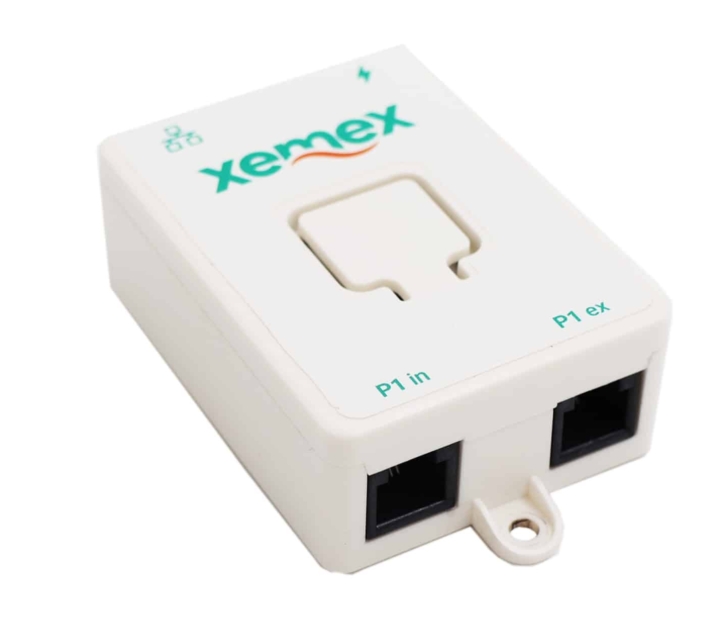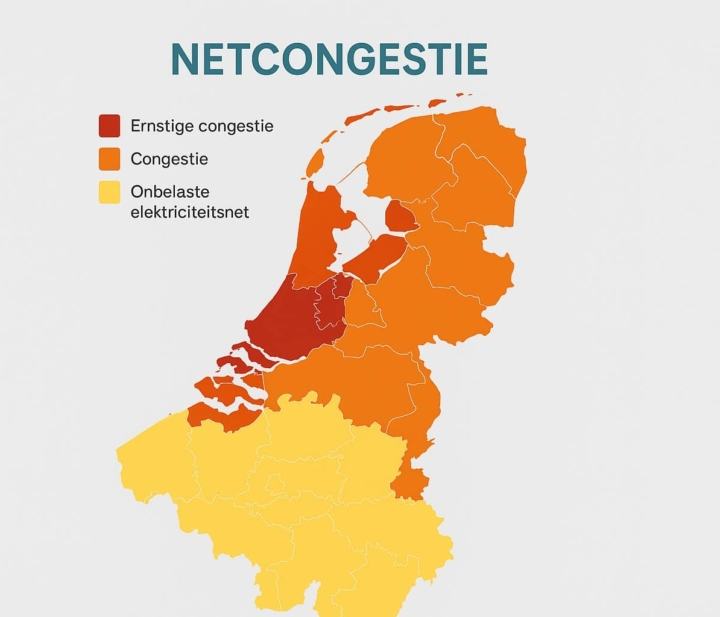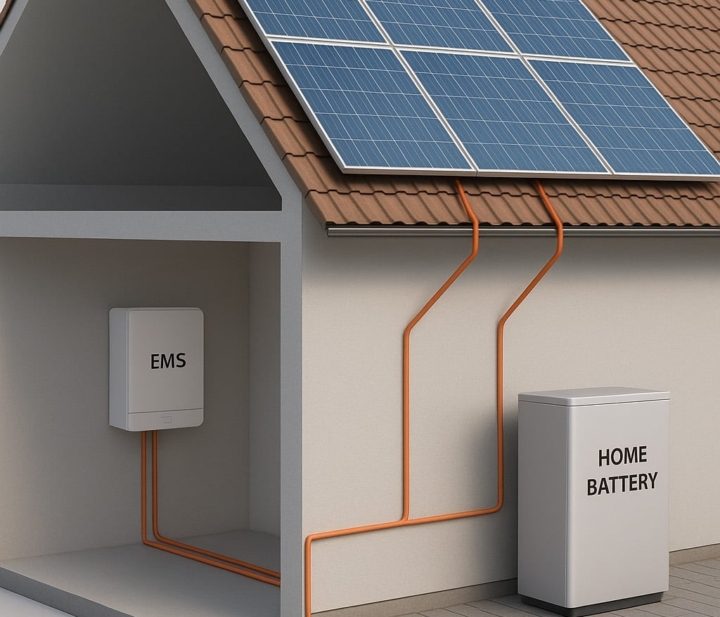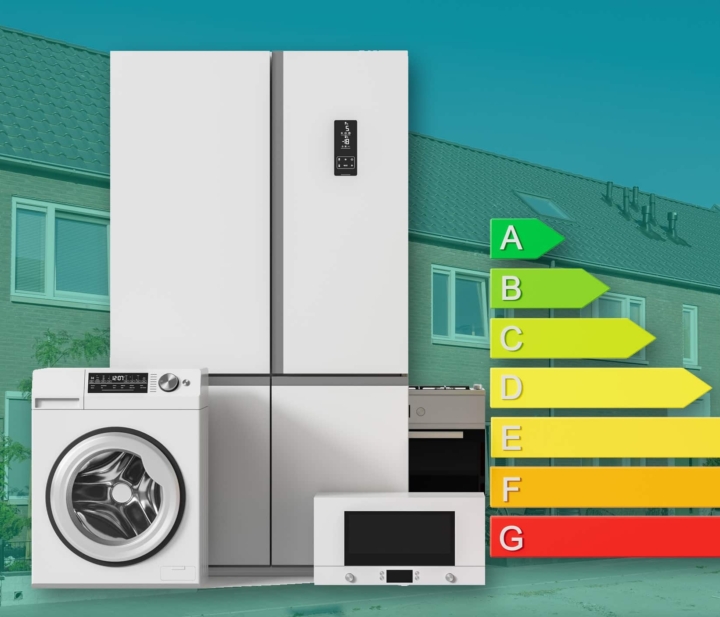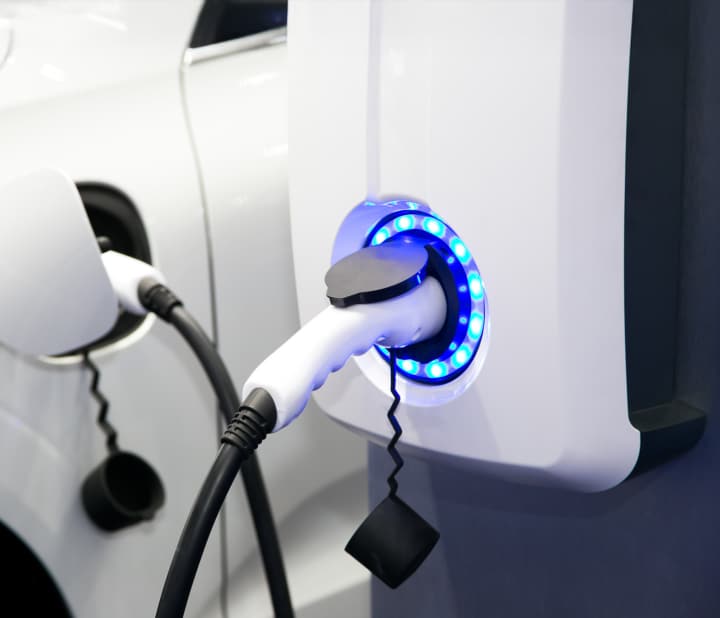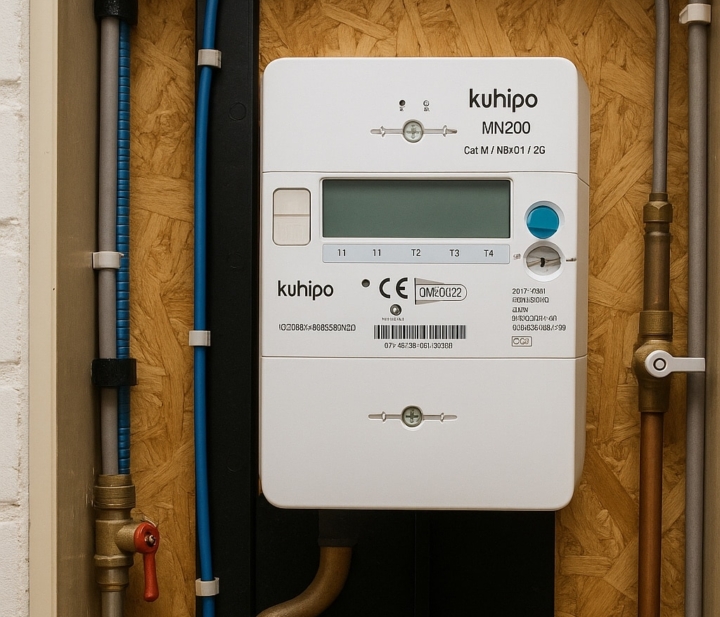Energy Consumption in the Netherlands – Calculate & Save Smartly with EMS
Everyone deals with it daily, but few truly understand what is normal: energy consumption. We turn up the heating a notch, leave lights on, or charge our phones without considering the impact. But how much electricity and gas does an average household actually use? And how does your consumption compare to that average? In this article, we delve into the numbers, examine the biggest energy guzzlers in the home, address questions like “Is 6 kWh per day a lot?” and explain how smart technology like an Energy Management System (EMS) helps you gain control over your energy.
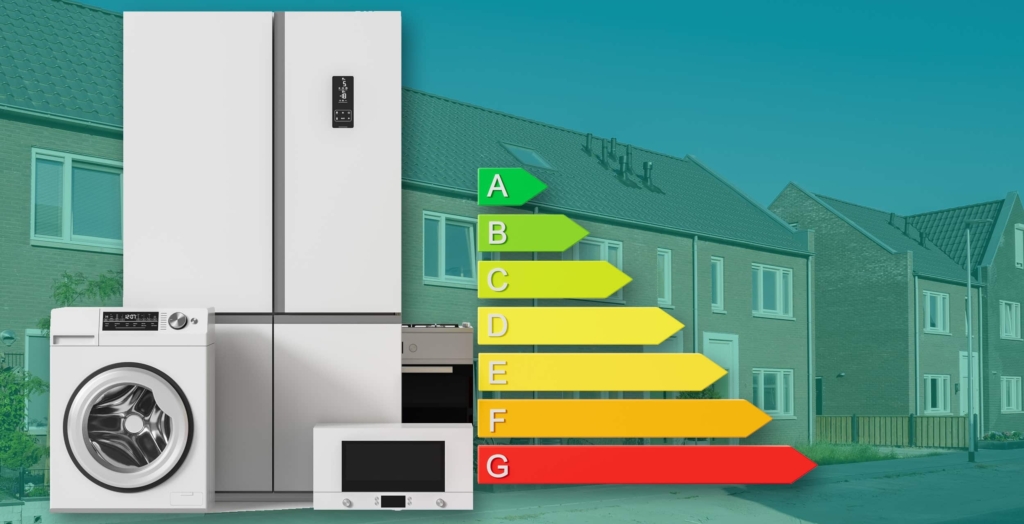
What is Normal Energy Consumption?
The question sounds simple, but the answer is nuanced. The average household energy consumption in the Netherlands is around 2,500 to 4,300 kWh of electricity per year and between 900 and 1,700 m³ of gas. However, these averages don’t tell the whole story. A single person in a well-insulated apartment might use around 1,400 kWh and 600 m³ of gas, while a family of four in a detached house could easily exceed 4,000 kWh and 1,700 m³ of gas.
On average, a one-person household uses about 1,600 kWh of electricity and 900 m³ of gas. For two people, this rises to approximately 2,500 kWh and 1,100 m³. A family of four can quickly reach 4,300 kWh and 1,700 m³ of gas. This makes sense: more people mean more appliances, more cooking, more laundry, and more showers.
Therefore, normal energy consumption depends not only on the number of residents but also on factors such as the type of dwelling, insulation, and the presence of solar panels or a heat pump.
What Are the Biggest Energy Consumers at Home?
When you gain insight into your consumption, you might be surprised by the actual culprits. Heating tops the list: on average, more than 70% of gas consumption in the Netherlands goes to heating the home. Following that is hot water, primarily due to showering. An average household can consume hundreds of m³ of gas per year just for hot water.
In terms of electricity, the biggest energy consumers are often less visible. Many household appliances, such as washing machines, refrigerators, and televisions, may seem like low consumers but collectively account for a significant portion of your energy bill. For instance, a tumble dryer can easily consume 500 kWh per year. Refrigerators and freezers run 24/7 and together can easily add up to 400 to 600 kWh per year. Add to that a television, computers, lighting, and standby power consumption from appliances, and you can see how quickly the kWhs add up.
The good news is that there’s potential for significant savings with these devices. An A+++ refrigerator, for example, can reduce electricity consumption by up to 50% compared to older models. Additionally, using appliances during off-peak hours can lead to savings.
Is 6 kWh per day a lot?
Many people wonder whether their daily consumption is normal. Let’s take the example of 6 kWh per day. That might sound like a lot, but converted to a year, it’s approximately 2,200 kWh. For a single person, this is on the high side, but for a household of two, it is perfectly normal. For a family of four, 6 kWh per day is even relatively economical.
This shows that averages only make sense when compared to your personal situation. Do you live in a large house with many electrical appliances? Then your daily consumption is likely higher. Do you live alone and are often away from home? Then 6 kWh could actually be too much.
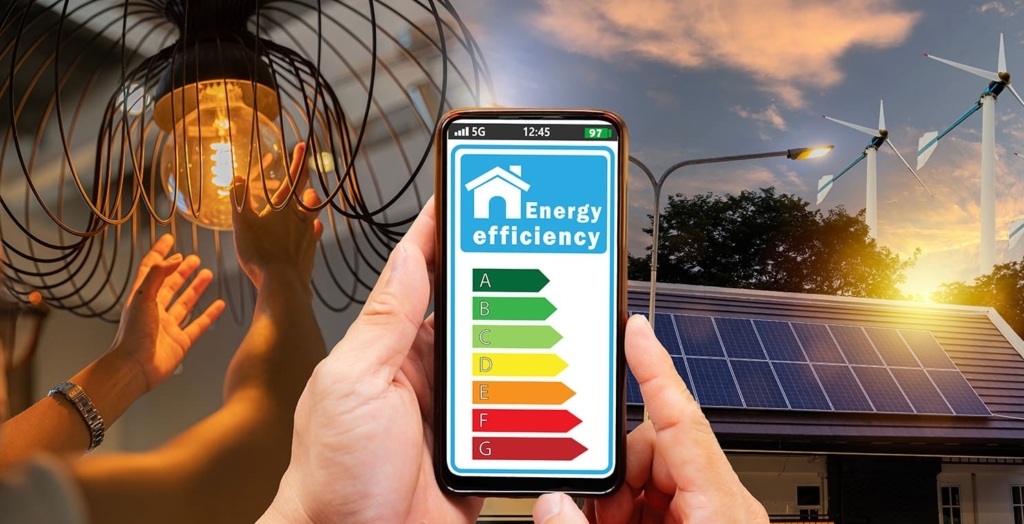
How many cubic meters of gas are normal for a house?
Gas consumption also varies widely. For a small, well-insulated home with one resident, 600 m³ per year may be sufficient. For a semi-detached house with a family of four, the average is around 1,500 to 1,700 m³. Detached houses without proper insulation often consume even more.
A typical house in the Netherlands – a mid-terrace home with 2 to 4 occupants – uses on average between 1,000 and 1,400 m³ of gas per year. The largest portion goes to heating, followed by hot water. Cooking with gas accounts for only a small part of the total, often less than 50 m³.
Calculating energy consumption: insight gives control
If you want to save energy, you first need to know your starting point. Calculating your energy consumption is simple: check your smart meter readings or analyze your annual energy bill. This gives you a clear picture of how much electricity and gas your household actually consumes. This insight is crucial: only if you know where you stand can you take targeted steps to save.
Nowadays, calculating your energy consumption is much easier than in the past. Where you used to rely on an annual bill, smart meters and energy apps now provide real-time insight into your consumption. This allows you to see not only how much energy you use daily, but also how your consumption develops month by month and where the peaks occur. You may discover that you use much more energy on evenings when the dryer is running, or that standby consumption at night is higher than you thought. This reveals exactly when you consume the most energy, for example when multiple appliances are running simultaneously. Such insights help you adjust your behavior or use appliances more consciously.
You can also compare your own consumption with averages. The average energy consumption per household varies greatly depending on the type of home and family size. It is often stated that an average household in the Netherlands consumes around 2,500 kWh of electricity and 1,200 m³ of gas per year. If you live alone in an apartment, your consumption is likely lower; if you live with a family in a detached house, your consumption will be significantly higher. By comparing your situation with these averages, you can see whether you are consuming relatively much or relatively little.
Energy consumption in the Netherlands – how do we compare?
Compared to the rest of Europe, the Netherlands is average. Our electricity consumption is slightly higher than that of southern countries such as Spain or Italy, where fewer electrical appliances are needed for heating. At the same time, we use less electricity than Scandinavian countries, where electric heating is much more common.
What really sets us apart is our gas consumption. It has historically been high in the Netherlands because millions of homes are still heated with traditional gas boilers. As a result, per household, we consume more gas than many other European countries. At the same time, in recent years, a clear shift has taken place: more and more homes are being insulated and connected to heat pumps or district heating.
The trend is clear: the Netherlands is electrifying. Heat pumps, induction cooking, and electric cars are on the rise, increasing average electricity consumption. Conversely, gas consumption is slowly but steadily decreasing. This means our energy use is shifting more toward electricity, and sustainable generation (solar panels, wind energy) is playing an increasingly important role in our energy supply.
Moreover, this shift requires smart energy management. If everyone charges their car or switches on the heat pump during a cold winter evening, new peaks in demand occur. That is exactly why insight into your own consumption is so valuable: it not only helps you save, but also allows you to be mindful of the timing of your energy use. This benefits not only your wallet but also the stability of the energy grid.
From insight to action – the role of an EMS
It is inspiring to know what is average or normal, but ultimately you want control over your own energy consumption. That’s where the Energy Management System (EMS) comes in. An EMS acts as the conductor of your energy household. It collects data from your smart meter, solar panels, charging station, and appliances, and converts it into clear insights.
With an EMS, you can immediately see where you consume the most and when. You receive alerts if your consumption suddenly rises above normal. You can track trends by day, week, or month, enabling more conscious decisions: running the washing machine during off-peak hours or charging your electric car when your solar panels are producing maximum power.
A family of four with an average consumption of 4,300 kWh of electricity and 1,700 m³ of gas can save 10 to 15 percent by using an EMS. This is not only good for the wallet but also for the climate. And the best part: the savings are measurable, which also makes it motivating to maintain energy-conscious habits.
Calculation: What Does an EMS Deliver?
To illustrate the effect of an EMS, we use an example scenario. Note: all numbers are illustrative. Enter your own rates and consumption to apply the results to your situation.
Example household scenario
- Total annual consumption: 8,000 kWh (heat pump + EV + household appliances), a typical average energy consumption in the Netherlands
- Flexibly controllable consumption:
- EV charging: 2,000 kWh/year
- Boiler/heat pump “boost”: 500 kWh/year
- Washing/drying/dishwashing: 300 kWh/year
- Total flexible: 2,800 kWh/year
- Dynamic contract (example prices including energy component & taxes, excluding fixed charges):
- Off-peak hours: €0.15/kWh
- Average hours: €0.28/kWh
- Peak hours: €0.45/kWh
Step 1: Costs without EMS (reference)
Assume all flexible consumption is billed at the average rate:
2.800 kWh × €0,28 = €784
Step 2: Savings by shifting consumption with EMS
70% of flexible consumption is shifted from average to cheap hours:
1.960 kWh×(0,28−0,15)=€254,80
10% is shifted from peak hours to average hours:
280 kWh×(0,45−0,28)=€47,60
Total direct savings with EMS: €302.40 per year
This demonstrates how an EMS lowers costs through demand management by intelligently shifting consumption to cheaper periods.
Step 3: Additional benefit from self-generated solar power (optional)
If you have 1,000 kWh of surplus solar energy per year, an EMS can use 800 kWh locally instead of feeding it back to the grid. With a feed-in tariff of €0.10/kWh and avoided purchase price of €0.28/kWh:
800 kWh×(0,28−0,10)=€144
Total indicative EMS savings: €302 + €144 = €446/year
This is indicative; your exact savings depend on flexibility, dynamic rates, and feed-in compensation.
Why This Approach Works
The principle is simple: monitor + control. An EMS ensures that you not only see what you consume, but also actively manage energy to the times when it is financially or sustainably most advantageous. This increases self-consumption, saves costs, and optimizes the use of dynamic tariffs.
Conclusion
What we’ve learned is that there is no single “normal” energy consumption. A single person in an apartment uses around 1,600 kWh of electricity and 900 m³ of gas, while a family of four can easily exceed 4,000 kWh and 1,700 m³. Appliances such as dryers, refrigerators, and standby consumers are often the biggest energy users. Daily consumption around 6 kWh can be normal or high depending on your situation.
By gaining insight into your consumption and using smart apps or an EMS, you can not only compare but also genuinely save. This turns numbers into concrete steps toward more sustainable and cost-effective energy use.
Always ready to start
Wondering what we can do for your organization? Contact Xemex and discuss your needs with our team. Together we will realize a solution that addresses your energy challenges and opens up new possibilities.
Burgemeester Burgerslaan 40
5245 NH 's-Hertogenbosch, The Netherlands
Metropoolstraat 11a
2900 Schoten; Belgium
